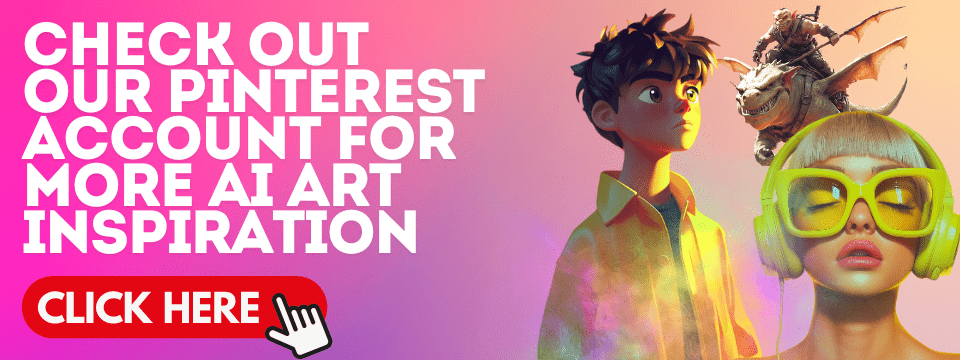Our MidJourney Prompt Builder provides a wide range of customization options to help you generate high-quality AI imagery that meets your creative vision. Each feature plays a specific role in shaping the outcome of your prompt, and understanding how to use them effectively will enable you to craft the perfect prompts for MidJourney. Here's a breakdown of each feature and how it works.
Style
The Style option determines the overall visual aesthetic of your image. Whether you're aiming for a lifelike representation or an artistic abstraction, the style you choose sets the foundation for your image's look and feel. For instance, selecting Photorealistic will result in highly detailed, true-to-life images, whereas choosing Fantasy will generate more imaginative, surreal visuals. If you’re looking for something more abstract or minimal, selecting Surrealism or Minimalist will bring out those qualities in your final piece. Choose a style that complements the mood and subject you want to portray.
Subject
The Subject is the main focus of your image—the core element that defines what your image is about. It could be anything from a specific object like "a mountain landscape" to more complex ideas such as "a futuristic city." The more descriptive and specific you are with your subject, the better MidJourney will understand what you’re envisioning. Whether you want a detailed scene or a single focal point, this field is where you lay out your primary creative vision.
Mood or Tone
The Mood or Tone you select plays a crucial role in the emotional impact of your image. Whether you want your image to feel calm, vibrant, mysterious, or even dark, the mood sets the atmosphere. For example, choosing a mood like calm might result in soft lighting, peaceful landscapes, and gentle colors, while a vibrant mood might emphasize bright colors and dynamic compositions. This option helps convey the emotional message of the artwork, allowing you to tailor how viewers will feel when they see the image.
Lighting
Lighting defines how light interacts with the objects and scenery in your image. MidJourney allows you to specify various lighting conditions, such as golden hour, which offers warm, dramatic light from a low sun, or studio lighting, which emphasizes clean, bright highlights and minimal shadows. You can use lighting to add mood and texture, making a significant difference in the final result. Choosing soft lighting can create a gentle, dreamlike feel, while more dramatic lighting might enhance contrast and make the image pop with intensity.
Color Palette
The Color Palette controls the dominant colors in your image. You can choose between different palettes like vibrant for bold, saturated hues, or muted for softer, more understated tones. The color palette significantly affects the visual tone of your image. For example, a monochromatic palette focuses on varying shades of a single color, which can convey elegance or simplicity. This option is key when setting the emotional tone and mood through color, giving you control over how viewers interpret your image.
Composition
Composition refers to how the elements in your image are arranged and viewed. Options like close-up, aerial shot, or wide-angle allow you to decide the perspective from which your subject is seen. A close-up composition emphasizes fine details and textures, while a wide-angle composition captures more of the surrounding environment, providing a broader sense of context. The right composition can guide the viewer’s eye to focus on specific elements or create a more immersive experience by highlighting the setting.
Medium
The Medium option defines how the image appears in terms of artistic style. You can choose between mediums like painting, photography, or digital art. If you want the image to feel more like a traditional artwork, selecting painting might result in a textured, brushstroke effect, while digital art might give a sleeker, modern appearance. This feature helps you achieve the desired finish for your image, making it look like a traditional art piece or a highly polished digital creation.
Artist Reference
The Artist Reference allows you to specify a well-known artist’s style to influence the output of your image. By entering an artist’s name, such as Van Gogh or Picasso, MidJourney will try to emulate their artistic techniques in your image. This option is perfect if you admire a particular artist's style and want your image to evoke the same visual qualities, such as Van Gogh’s swirling skies or Picasso’s cubist forms. It’s a powerful tool for creating artwork that feels inspired by the masters.
Aspect Ratio
The Aspect Ratio controls the dimensions of your image. Choosing from ratios like 16:9 (widescreen), 1:1 (square), or 4:3 helps you create images that are suited for different platforms and purposes. For example, a 1:1 aspect ratio is ideal for social media posts, especially on platforms like Instagram, whereas 16:9 works well for widescreen displays or website banners. Setting the correct aspect ratio ensures that your image looks professional and fits the context in which it will be used.
Version
The Version field refers to the version of the MidJourney model you want to use. The latest versions offer improvements in image generation quality, including better rendering of details, textures, and lighting. Selecting 5.0 will provide you with the most up-to-date AI enhancements, while earlier versions might offer faster processing times with slightly different rendering characteristics. Depending on your preference for quality or speed, you can choose the version that best fits your project.
Quality
The Quality setting determines the level of detail and complexity in your image. Selecting a quality value like 1 provides a standard balance between detail and speed, while increasing the value to 2 will produce highly detailed images at the cost of longer processing times. Conversely, setting the quality to 0.25 or 0.5 will result in quicker generation but with less refinement. This is useful if you're iterating through multiple prompts quickly or want a rough idea before refining further.
Stylize
The Stylize option (ranging from 0 to 1000) allows you to control how much MidJourney will push the boundaries of artistic interpretation. A lower value (closer to 0) will keep the image more realistic and aligned with your input, while a higher value (closer to 1000) will let MidJourney take creative liberties, resulting in more abstract or artistic interpretations. If you’re looking for a balance between realism and creativity, you can experiment with moderate stylize settings.
Chaos
The Chaos option (0 to 100) determines how much randomness and unpredictability MidJourney introduces into the image generation. A lower chaos value produces more controlled, predictable results, while a higher chaos value introduces more variation, making the output more experimental and unexpected. If you want to explore unique and surprising outcomes, raising the chaos setting can yield intriguing results.
Stop
The Stop feature (10% to 100%) controls at what point the image generation process should stop. Setting a lower stop percentage means that MidJourney will finish the image earlier, resulting in a less detailed or unfinished look, which can be useful for more conceptual or abstract imagery. A stop value of 100% ensures that the image is fully rendered with all the intended details.
Repeat, Weird, Tile, and Seed
Additional advanced options such as Repeat, Weird, Tile, and Seed offer even more customization. Repeat determines how many variations of the image are generated, Weird introduces bizarre or surreal elements, Tile makes the image tileable for seamless patterns, and Seed ensures repeatability of a specific output. These options give you fine control over the creative process, allowing you to experiment with different versions and refine the randomness or consistency of your results.
Each of these features in our MidJourney Prompt Builder is designed to give you the flexibility and control you need to generate highly customized and visually stunning AI-generated images. By understanding how each option affects your final result, you can fine-tune your prompts to achieve exactly what you're looking for.

